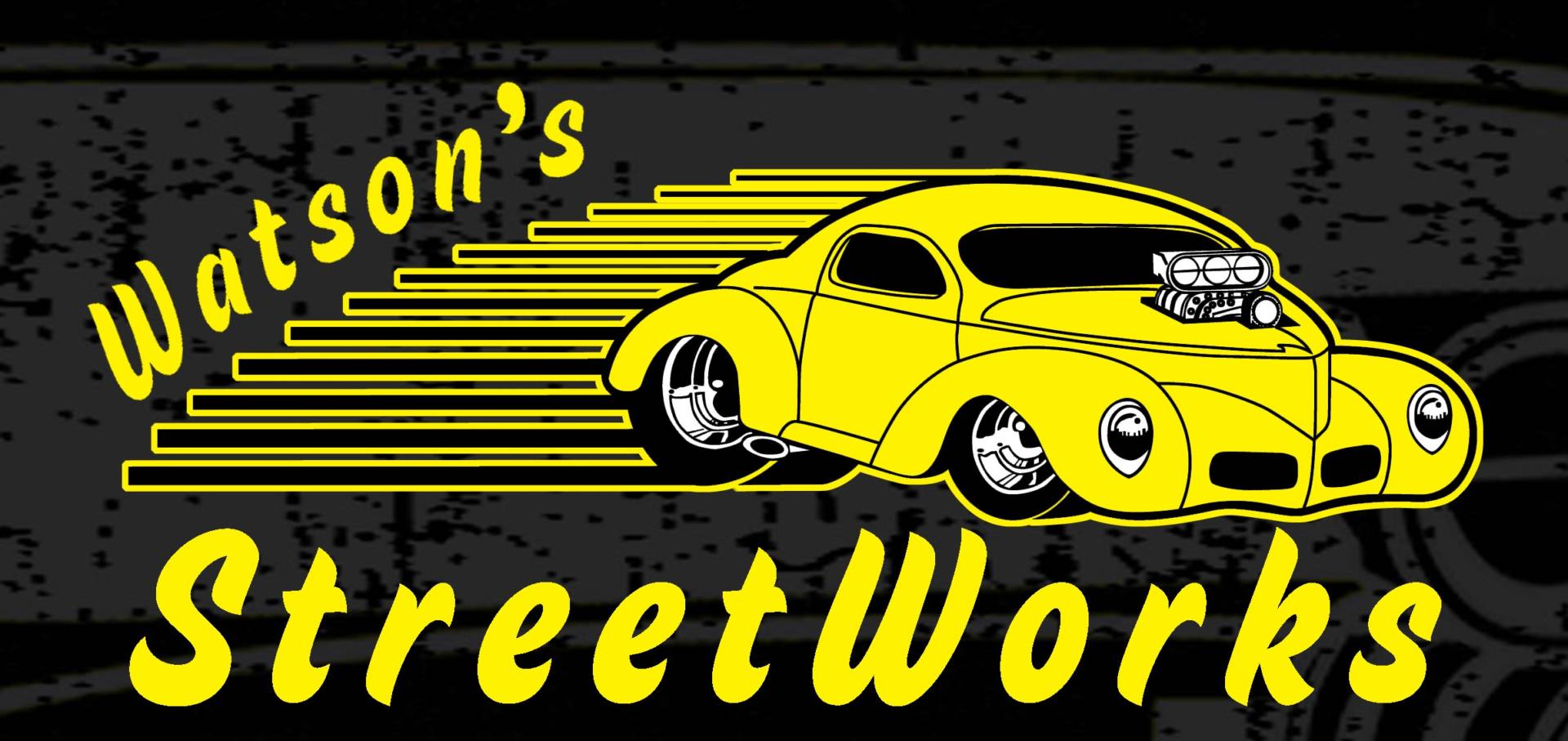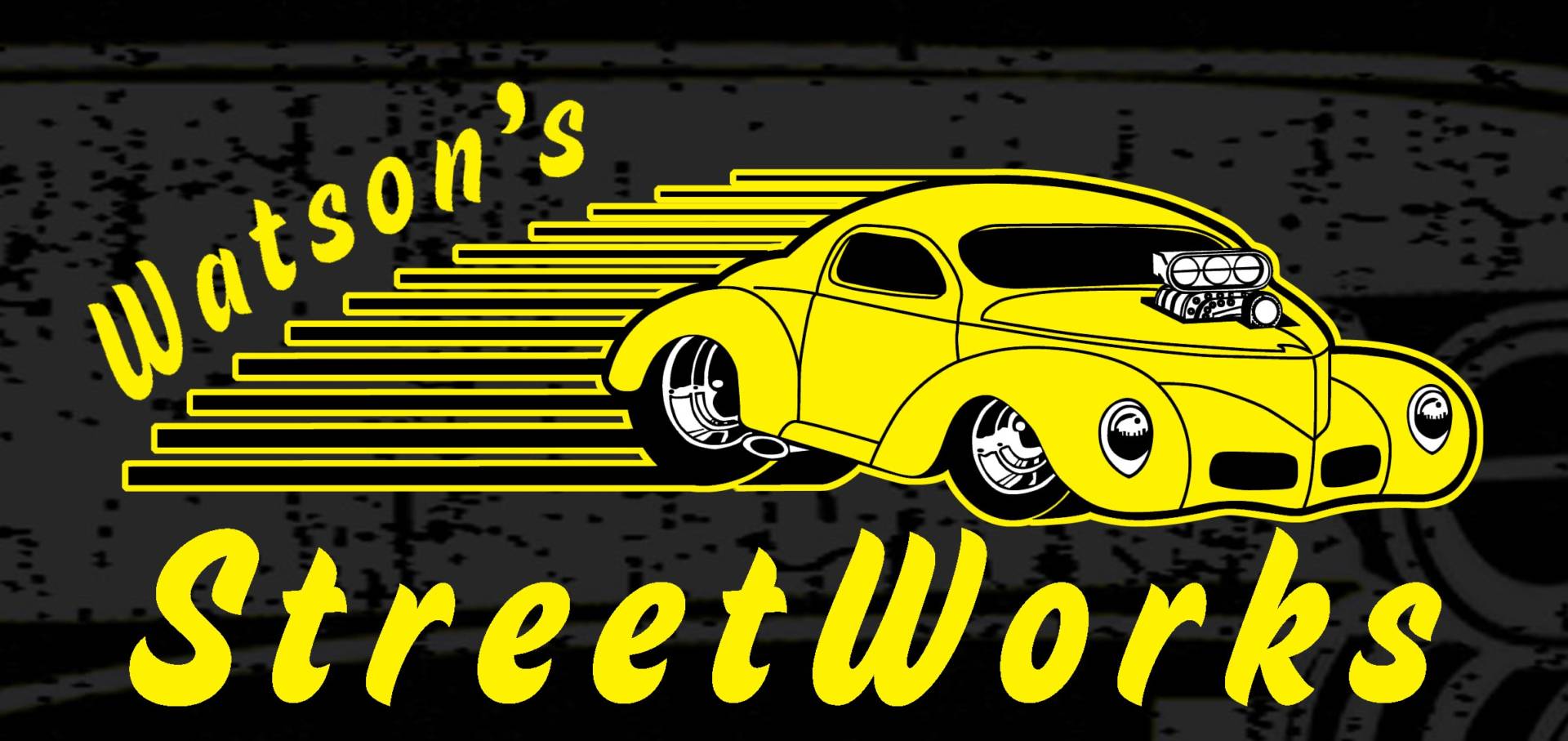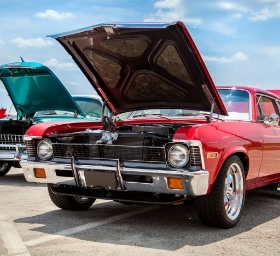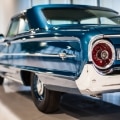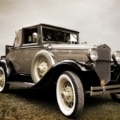Types of Older Cars: Antique vs. Vintage vs. Classic Leave a comment
Types of Older Cars: Antique vs. Vintage vs. Classic
Antique vs. vintage vs. classic. Many people use these terms interchangeably when discussing different kinds of older cars. Whatever you call them, there’s something extraordinary about older autos. But understanding the differences between these types of older cars is essential, especially if you’re a car enthusiast or thinking about starting a collection.
What Is a Classic Car?
When people talk about classic cars, they’re usually referring to vehicles that have stood the test of time and still turn heads today. But what exactly makes a car a classic? Only certain cars built between 1915 and 1948 can qualify as “Full Classics”, according to the Classic Car Club of America. On the other hand, the Antique Automobile Club of America deems any car older than 25 years a classic. Either way, these vehicles often represent the best of automotive design and engineering from their era.
Classic cars are not just old; they are celebrated for their design and performance and the nostalgia they bring. So, when someone asks, “What makes a car a classic?” It’s a mix of age, historical significance, and a bit of that timeless appeal that keeps car lovers interested.
Notable examples of Full Classics include all 1915 to 1948 Alfa Romeos, 1927 to 1939 Aston-Martins, and certain Jaguars made between 1946 and 1948.
What Is a Vintage Car?
Vintage cars are a special category of older cars with unique charm and historical significance. Typically, a vintage car was built between 1919 and 1930.
These cars are known for their distinctive designs, featuring elegant curves and intricate details not found in modern vehicles. They also represent a time when car manufacturing was becoming more advanced but still retained much of the craftsmanship from earlier days.
Notable examples of vintage cars include the 1925 Rolls-Royce Phantom, the 1929 Ford Model A, and the 1930 Cadillac V-16. These cars are pieces of history that showcase the innovation and style of their time.
What Is Considered an Antique Car?
Antique cars are the oldest and often the most treasured vehicles in the world of car collecting. But what exactly is considered an antique car? Generally, an antique car is at least 45 years old. Many of these vehicles are historical artifacts that give us a glimpse into the early days of the automotive industry.
Antique cars are known for their craftsmanship and unique designs. Older antiques feature wooden frames, brass fittings, and other materials not commonly used in modern cars. These vehicles were built when cars were still a relatively new invention, and each one has its own story to tell.
Famous examples of older antique cars include the 1908 Ford Model T, the 1912 Rolls-Royce Silver Ghost, and the 1925 Bugatti Type 35.
Antique vs. Vintage vs. Classic: Why It Matters
When it comes to older cars, the terms antique, vintage, and classic can sometimes be confusing. Each category has its own unique characteristics, and understanding them can help you appreciate the charm and history of these vehicles.
- Age: The most straightforward way to differentiate between these types of cars is by their age. Antique cars are the oldest, typically 45 years or older. Vintage cars are from a specific period, usually built between 1919 and 1930. Classic cars are generally at least 25 years old.
- Design: Antique cars often feature wooden frames and brass fittings, reflecting the early days of car manufacturing. Vintage cars, built in the 1920s, frequently have elegant curves and intricate details. Classic cars from the mid-20th century showcase the styles and technological advancements of their time, often featuring powerful engines and sleek designs.
- Historical Significance: Antique cars represent the dawn of the automobile era, offering a glimpse into the past when cars were a new and exciting invention. Vintage cars capture the spirit of the Roaring 20s, a time of innovation and style. Classic cars bring us back to the golden age of the automobile, highlighting the best of mid-20th-century design and engineering
Understanding these distinctions is crucial for collectors and enthusiasts. Knowing whether a car is antique, vintage, or classic can affect its value, how it’s restored, and even how it’s insured. Insurance companies, in fact, often have different definitions of antique, vintage, and classic, so it pays to talk to your insurer before making a purchase. States often have different definitions, as well, which can affect how a car is licensed.
In the end, understanding the differences helps in appreciating each car’s unique story. When comparing the various types of older cars, it’s all about age, design, and the rich history that each type brings to the table.
Frequently Asked Questions About Older Types of Cars
Older types of cars have fascinated auto enthusiasts for years. But they bring with them a fair number of questions. Here are some of the common queries we get about older cars.
How Do I Determine the Value of an Older Car?
The value of an older car depends on several factors, including its condition, age, rarity, and historical significance. You can consult classic car appraisal guides, attend car auctions, or seek the expertise of a professional appraiser to get an accurate valuation.
Can I Use an Older Car as My Daily Driver?
While using an older car as a daily driver is possible, you must ensure it has the necessary modern safety features. Many owners prefer to use them for special occasions or weekend drives.
Where Can I Find Parts for Older Cars?
Finding parts for some older cars can be difficult, but there are several sources you can check. Online marketplaces, specialty shops, car clubs, and swap meets are great places to start. If you’re working on a hot rod, you can rely on Watson’s StreetWorks for a fantastic lineup of hot rod parts and latches and hinges.
Trust Watson’s StreetWorks as Your Hot Rod Parts Partner
Now that you understand the different types of older cars, you’re ready for the next step. Watson’s StreetWorks has an extensive inventory of modern and vintage hot rod parts. With competitive pricing and fast turnarounds, we’re the go-to choice for hot rod enthusiasts. Start shopping today and take advantage of everything Watson’s StreetWorks offers.
Articles Related to Hot Rodding History
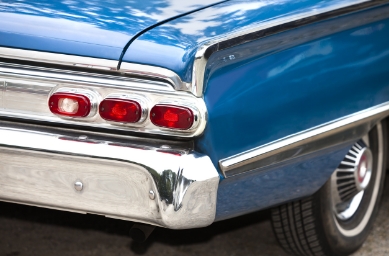
Discover all the great ways you can boost your hot rod tail light game…
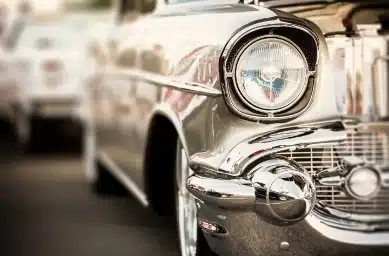
See how a headlight upgrade can make a difference in your classic car…
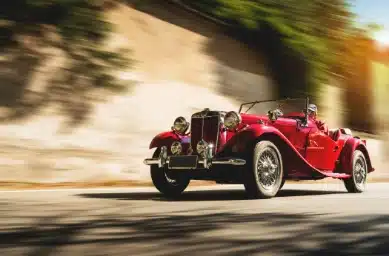
Learn how hot rodding has changed over the years…
